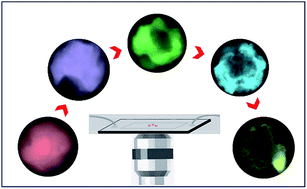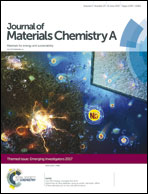Galvanic reactions at the single-nanoparticle level: tuning between mechanistic extremes†
Abstract
The formation of bimetallic nanostructures through the process of galvanic exchange of metal nanoparticle (NP) templates involves a drastic phase transformation with a complex atomistic mechanism. Using single-NP plasmonic spectroscopy, we measured the true kinetics of galvanic corrosion of Ag by Au3+ salts. An individual Ag NP undergoes an abrupt transition to the final Au/Ag alloy nanocage, limited only by the nucleation of a void. The ensemble conversion proceeds by NPs switching one at a time to the product phase. But in the presence of an increasing concentration of a Cl− additive, the transformation kinetics are altered from a nucleation-limited, co-operative “NP-to-NP” process to a transport-limited, non-cooperative, “atom-by-atom” process. The inhibition of co-operativity within a NP is the result of AgCl formation, which electrochemically insulates the reacting Ag interface from the electrolyte. The alteration of the transformation mechanism also influences the templating process and the final morphology of the product nanostructures. The findings highlight the ability of additives to dramatically alter the very nature of a phase transformation at the atomistic level, knowledge that can be utilized for corrosion inhibition and production of porous, high surface-area nanostructures for heterogeneous catalysis.

- This article is part of the themed collection: Journal of Materials Chemistry A Emerging Investigators


 Please wait while we load your content...
Please wait while we load your content...